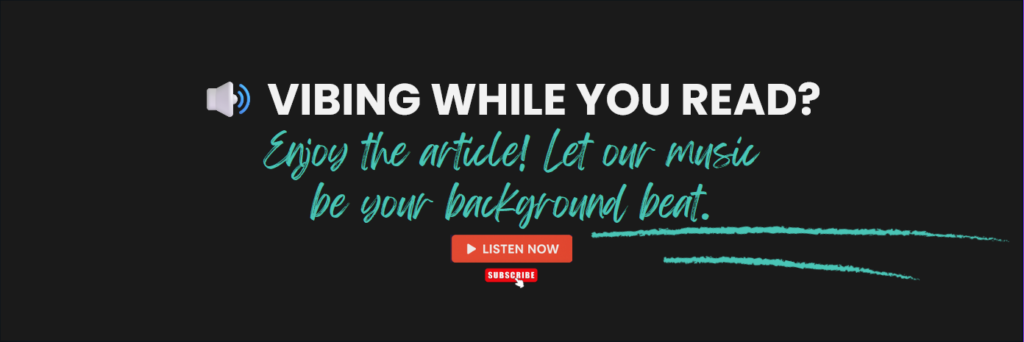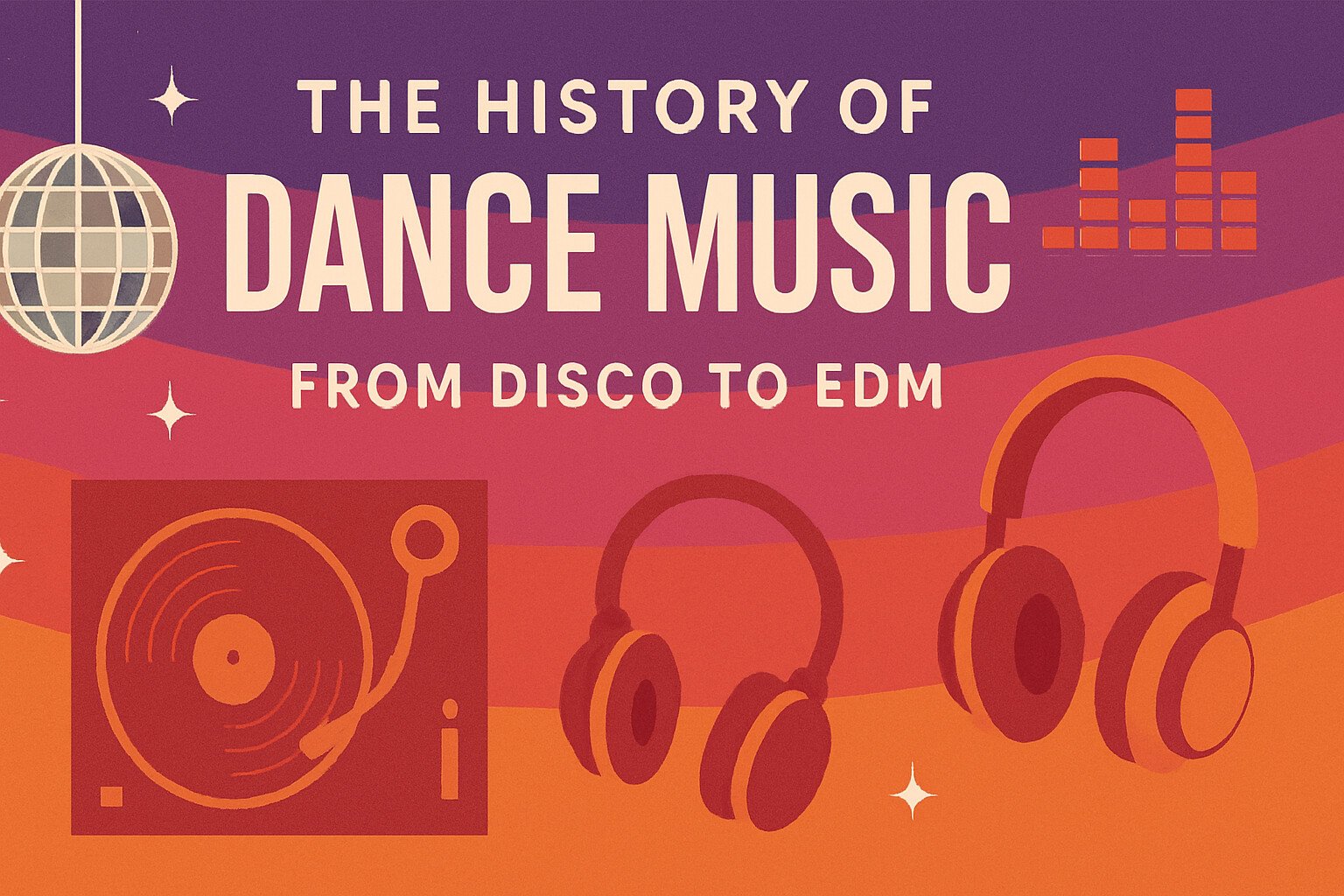
Dance music has always had a unique ability to bring people together, igniting energy, joy, and unity on dance floors across the world. From the soulful sounds of disco in the 1970s to the pulsating beats of today’s electronic dance music (EDM), the genre has undergone incredible evolution. Each era of dance music has introduced new sounds, cultures, and subgenres, while maintaining one unifying factor: the power to move people both physically and emotionally.
In this article, we’ll take a journey through the history of dance music, tracing its roots from the disco era to the global phenomenon that EDM has become today. Whether you’re a music enthusiast, an aspiring DJ, or just love vibing to a good beat, let’s dive into the rhythm and flow of dance music through the decades.
The Rise of Disco: Where It All Began
Dance music, as we know it today, largely began in the 1970s with the emergence of disco. Disco wasn’t just a genre of music—it was a full cultural movement. Known for its uplifting, funky beats, shimmering lights, and larger-than-life style, disco took over nightclubs in New York City, like the iconic Studio 54.
At its core, disco was all about freedom, inclusivity, and self-expression. It was rooted in the underground dance culture of marginalized communities, especially African American, Latino, and LGBTQ+ groups. Disco’s biggest tracks, like Gloria Gaynor’s “I Will Survive” and Donna Summer’s “I Feel Love,” dominated airwaves and defined the era.
However, by the late 1970s, disco faced backlash, symbolized by the infamous “Disco Demolition Night” in 1979, where disco records were publicly destroyed. While disco faded from the mainstream, its influence didn’t die. In fact, it laid the foundation for what would become house music, and its ethos of freedom and inclusivity remains a cornerstone of dance culture.
House Music: The Underground Revolution
As disco started to fade, a new form of dance music was being birthed in Chicago’s underground scene—house music. In the early 1980s, DJs like Frankie Knuckles, often called the “Godfather of House Music,” began experimenting with mixing disco records with drum machines and synthesizers, creating a sound that was deeper, more repetitive, and designed specifically for dancing.
House music thrived in clubs like The Warehouse, where the genre got its name. It spread across the U.S. and internationally, particularly in cities like New York and London. Tracks like Jamie Principle and Frankie Knuckles’ “Your Love” and Marshall Jefferson’s “Move Your Body” became anthems of the genre.
House music wasn’t just about the music—it was about the culture. It championed diversity, acceptance, and love, similar to disco, and became a safe space for marginalized communities. The genre also gave birth to subgenres, including deep house, acid house, and vocal house, each adding unique elements to the evolving dance music landscape.
Techno: The Birth of the Machine
Around the same time house music was emerging in Chicago, a parallel movement was taking shape in Detroit—techno. While house music had soulful, disco roots, techno was more mechanical and futuristic. Pioneered by artists like Juan Atkins, Derrick May, and Kevin Saunderson, collectively known as the “Belleville Three,” techno embraced cold, robotic beats and heavily used synthesizers and drum machines.
Early techno tracks like “Clear” by Cybotron and “Strings of Life” by Derrick May helped define the genre, characterized by fast-paced beats, repetitive rhythms, and a feeling of dystopian futurism. Detroit techno, as it came to be known, spread to Europe, particularly in Germany, where cities like Berlin became epicenters of techno culture.
Techno didn’t have the same immediate mainstream appeal as house, but it gained a massive underground following. By the late ’80s and early ’90s, it had solidified itself as a major genre within electronic music, influencing future styles of dance music for decades to come.
The Rave Culture Explosion of the ’90s
The 1990s were a turning point for dance music globally. With house and techno as the backbone, rave culture exploded, particularly in the UK and Europe. Raves were all-night parties, often held in warehouses or outdoor fields, where DJs would play electronic music to massive, energetic crowds.
Genres like jungle, drum and bass, and hardcore emerged from the rave scene, characterized by fast breakbeats and intense rhythms. Tracks like Prodigy’s “Firestarter” and Orbital’s “Chime” became anthems of the era. The rave scene also helped popularize trance music, a more melodic, euphoric form of dance music, with artists like Paul Oakenfold, Tiësto, and Armin van Buuren leading the charge.
The 1990s were also when dance music began its integration into mainstream pop culture. Acts like The Chemical Brothers and Fatboy Slim achieved commercial success with big beat—a style of dance music that combined breakbeats with rock and hip-hop elements.
Despite its growing popularity, rave culture faced pushback due to its association with illegal parties and the use of drugs like ecstasy. Governments cracked down on raves, particularly in the UK with the Criminal Justice Act of 1994, but the movement continued to thrive, with clubs becoming the new center for dance music culture.
The Global Takeover: Electronic Dance Music (EDM)
As we moved into the 2000s, dance music continued to evolve, but nothing compared to the global explosion of electronic dance music (EDM) in the 2010s. While house, techno, and rave music had mostly remained in underground or niche circles, EDM blew the doors wide open to the mainstream.
Artists like David Guetta, Calvin Harris, and Swedish House Mafia began dominating the charts with high-energy, festival-ready tracks. Songs like Guetta’s “Titanium” and Harris’s “Feel So Close” became radio staples, while massive festivals like Tomorrowland and Ultra Music Festival attracted hundreds of thousands of fans.
The rise of EDM also marked the era of the superstar DJ. Figures like Avicii, Deadmau5, and Skrillex were not just musicians—they became brands. Avicii’s “Levels” and Skrillex’s “Scary Monsters and Nice Sprites” became defining tracks of the EDM sound, characterized by heavy drops, catchy melodies, and a fusion of multiple genres like dubstep and electro house.
EDM wasn’t just a genre—it became a culture. The festival scene exploded, with iconic events like Electric Daisy Carnival (EDC) drawing massive crowds, and “PLUR” (Peace, Love, Unity, Respect) became the mantra for the EDM community, echoing the inclusive values that began with disco and house.
Dance Music Today: A New Era
Today, dance music is more diverse and accessible than ever. While EDM dominated the 2010s, we’ve seen a resurgence of house and techno, particularly with the rise of the underground “tech-house” scene. Artists like Fisher, Charlotte de Witte, and Peggy Gou are bringing a fresh spin to classic sounds, blending old-school beats with modern twists.
There’s also been an increased appreciation for global sounds in dance music. Genres like afrobeat, reggaeton, and baile funk are making their way into mainstream dance tracks, thanks to artists like Major Lazer and Diplo, who have successfully fused global influences with electronic production.
And let’s not forget about the power of social media. Platforms like TikTok have given rise to viral dance trends, further solidifying the connection between music and movement. Songs with catchy beats and danceable rhythms are blowing up on the platform, showing that dance music remains at the heart of youth culture.
The Future of Dance Music
Looking ahead, it’s clear that dance music will continue to evolve. Technology is making it easier than ever for aspiring producers to create music from their bedrooms, and the global accessibility of streaming services means there are no boundaries for where dance music can go next.
Virtual reality and AI-driven music creation are on the horizon, hinting at new ways that we will experience dance music in the future. But one thing remains certain—whether it’s through futuristic synths or classic four-on-the-floor beats, dance music will always have one mission: to make us move.
Conclusion: From Disco to EDM, The Dance Never Stops
From the glamorous nights of disco to the global phenomenon of EDM, dance music has evolved, adapted, and thrived for decades. What started as an underground movement has grown into a worldwide culture, with its roots in freedom, unity, and, of course, the love of the beat.
As dance music continues to evolve and take on new forms, one thing remains clear—people will always want to dance. Whether you’re vibing to the soulful grooves of house music or losing yourself in the heavy drops of EDM, dance music continues to bring people together, one beat at a time.
So, next time you hit the dance floor or press play on your favorite track, remember—you’re part of a movement that’s been shaping culture for over 50 years, and it’s only getting started.


